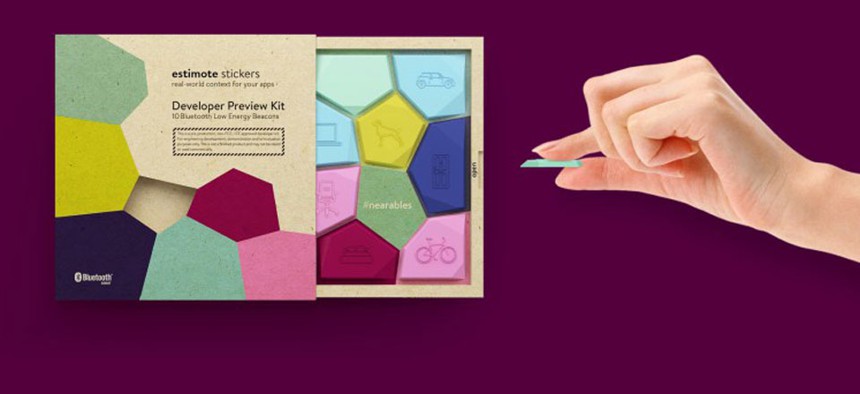These Cute, Tiny Sensors Will Soon Be Watching You Everywhere

Estimote
These beacons send unique Bluetooth radio pulses, which a mobile device can recognize.
One of the promises of the “internet of things” is that it will connect the real-world with the virtual. Low-energy Bluetooth beacons are emerging as one of its stronger early technologies.
Here’s a quick look at where beacon technology stands today: Estimote, one of the leading beacon startups, just launched these new, tiny, cute beacon “stickers,” which it will start selling to developers and hobbyists today. (A 10-pack costs $100, to ship this fall.) The goal is to be inexpensive enough that stores or other places could have a lot of beacons out at a time. They’re small enough to attach to something—a shoe? a salesperson?—and their novel look might even draw some curiosity.
How do they work and what do they do? Beacons—basically a battery and a tiny, low-energy computer—send unique Bluetooth radio pulses, which a mobile device can recognize. (Apple’s beacon language—which has early traction—is called iBeacon, and Google will be catching up in the next version of Android.)
It’s important to note that beacons don’t receive information, so they aren’t actually watching you themselves. To be monitored—at least how things stand today—you will first need to install a specific app and give it permission to track your location.
Some potential applications: If you’re using, say, a museum’s app as you walk around, it can launch into specific information about the sculpture you’re standing in front of. Or if you’ve pre-ordered an iced latte using a coffee shop’s app, a beacon at the door can tell the baristas that you’ve arrived. Estimote has also published a video of some ways it hopes beacons will be used.
There’s still a lot to figure out about how people will feel about interacting with beacons, whether the benefits will outweigh potential privacy concerns, or whether stores will actually do anything useful with all the data they’ll have access to. But expect to see and hear more about beacons in the near future.
Reprinted with permission from Quartz. The original story can be found here.


